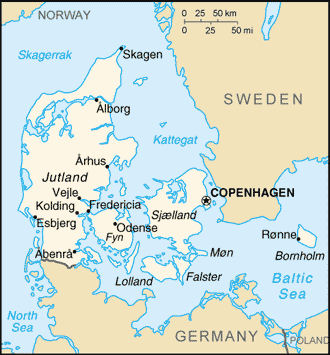 |
||
|
Denmark once depended on the sea for its livelihood, but now agriculture is one of its main businesses. It produces and exports dairy and processed meat products, as well as recording and stereo equipment, mink coats, Legos, beer, and wind turbines. With the minimum wage at $11 per hour, they cannot be competitive in most lower-end products, but excel at fine quality technology products. The Danes are excellent business people. Denmark is an expensive place to live. The average wage is about $24,000 per year. The tax rate is about 52 percent with a maximum of 62% at the highest income levels. On top of that, VAT (Value Added Tax) is 25% (except for cars at 180%). Most families require a 2-person income and as a result, 50% of the workforce is female. However, women receive the same pay for the same job as men, but as a whole, womens’ income is 90% of mens’ - the highest in Europe and probably the world. However, the Danes feel they get appropriate services for their tax investment. The health service is free, dental care is subsidized, pregnancy leave is a minimum 6 months, up to one year (and can be transferred to the spouse!), day care is provided, everyone gets a pension, and retirement homes are free. About 40% of the population receive some type of government support. In general, their highest priorities are on care for the aged, children, and the sick. As a result, one does not normally see people begging in the street, as is the norm in other countries. |
||
|
If you find typographical errors or have any other problems when looking at the site please contact the Webmaster describing the problem and the page involved. |
||
|
Copyright © 2000-2009 Jim Seavey and Verna Norris All Rights Reserved |
||
 Denmark, a land of 5 million people and legends of Vikings, is a collection of 400 islands and a peninsula jutting north from Germany. It’s capitol is Copenhagen, located on the east coast, just 10 miles from the coast of Sweden. Denmark is a constitutional monarchy, with a one house parliament and a well-respected royal family. The current monarch is Queen Margaret and the monarchy is the oldest in the world.
Denmark, a land of 5 million people and legends of Vikings, is a collection of 400 islands and a peninsula jutting north from Germany. It’s capitol is Copenhagen, located on the east coast, just 10 miles from the coast of Sweden. Denmark is a constitutional monarchy, with a one house parliament and a well-respected royal family. The current monarch is Queen Margaret and the monarchy is the oldest in the world.